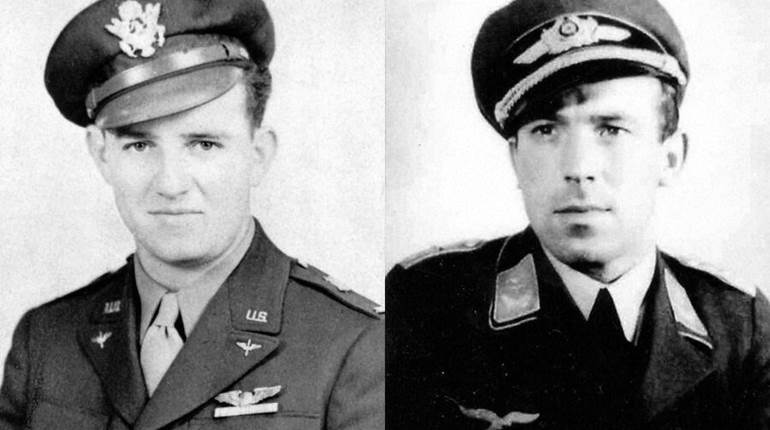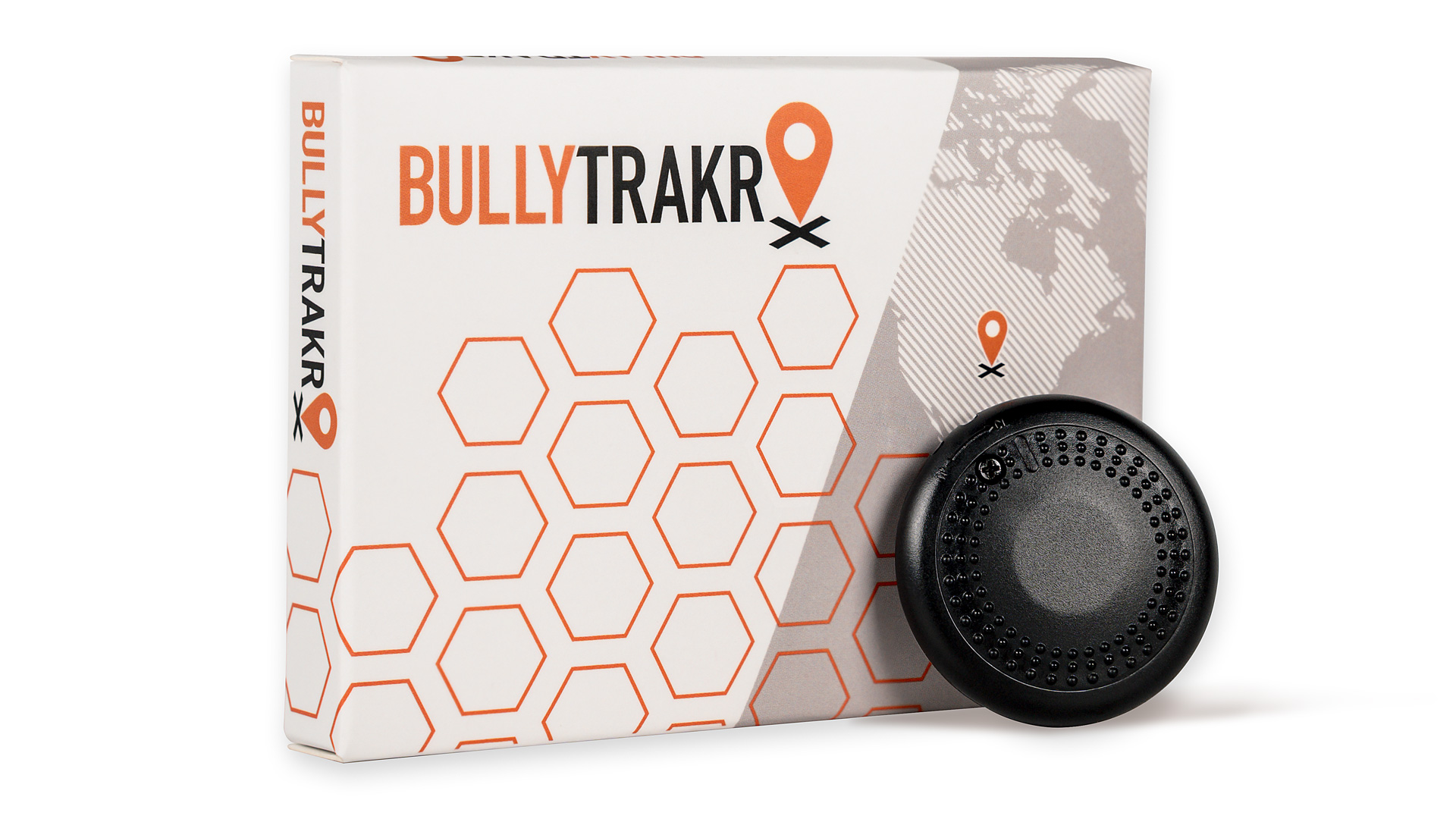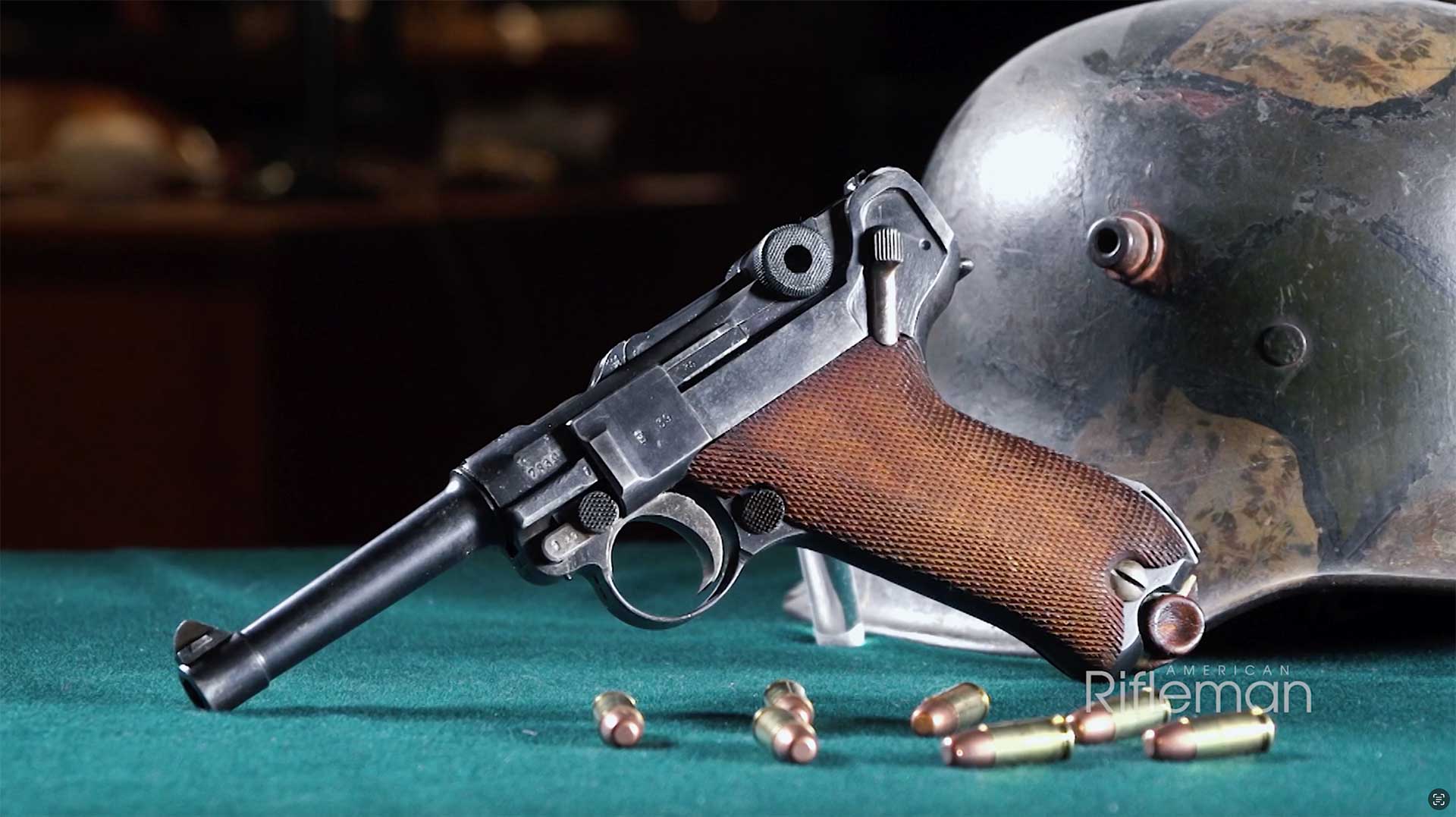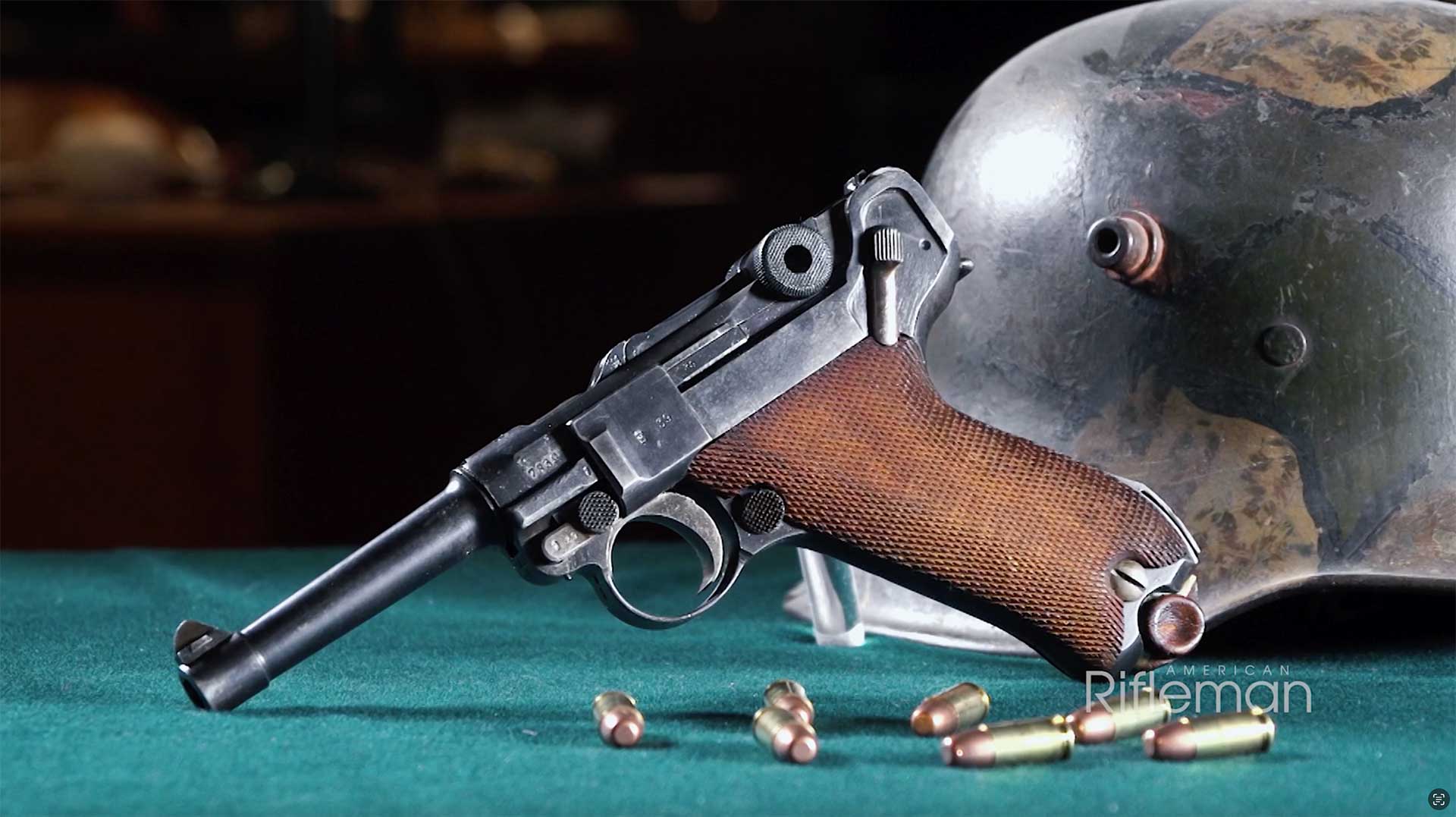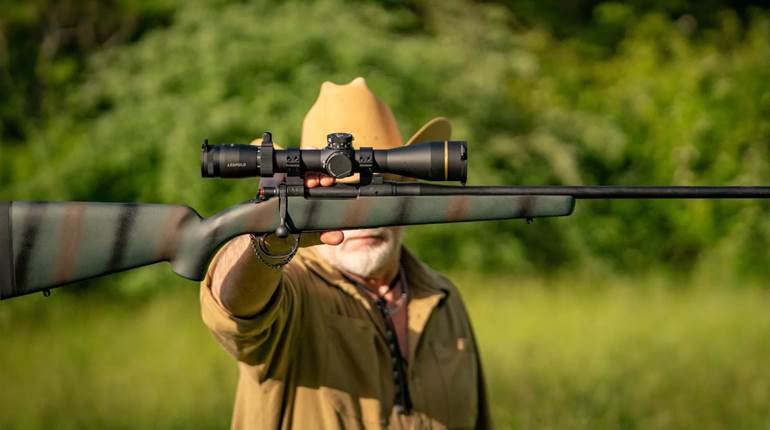
The incredible speed of the German advance in the spring of 1940 left Allied forces in a state of shock. When German tanks crashed into Belgium on May 10th, few would have believed that, in just 46 days, France would fall, and the British would be ejected from western Europe. The world held its breath for what appeared to be an inevitable invasion of England.
 A toast to the Sten Gun: when the compact and simple Sten Gun became available to the French underground, it offered a powerful, lightweight firearm well-suited for the needs of the resistance fighters. NARA.
A toast to the Sten Gun: when the compact and simple Sten Gun became available to the French underground, it offered a powerful, lightweight firearm well-suited for the needs of the resistance fighters. NARA.
During the summer of 1940, France was split between the German-occupied north and the slightly independent Vichy region in the south and in the colonial territories. At this point, the concept of French resistance began to grow. Early actions did not feature gun battles and were primarily acts of sabotage against German communications and transport, along with the dissemination of anti-Nazi propaganda. But slashing German tires and trashing Nazi and Vichy leaders in resistance leaflets wasn’t particularly satisfying, nor was it effective at running the Nazis out of France. Stronger measures were required.
“Men Are Already Gathering In The Shadows. Will You Join Them?”
Armed resistance in France began in earnest during May 1941, with the formation of groups like “Combat.” Firearms were in short supply, and men with combat experience were hard to find. When Germany invaded the Soviet Union in late June 1941, the French communist party, the “Parti Communiste Français” (PCF), turned aggressive in their actions against the German occupiers. On Aug. 21, 1941, a French communist agent assassinated a German naval officer on the Paris metro, the first German killed by the resistance. This led to a long-term, widespread campaign of assassinations, bombings and train derailments committed by the French communist resistance group FTP (Francs-Tireurs et Partisans Français).
 M1 carbine in the Resistance: The M1 carbine was an excellent arm for resistance units and were issued to French resistance cells after the U.S. Army landed in France. In this case, the resistance man was not French, but rather Ukrainian. Forced into Red Army service in his homeland, he was captured by the Germans during their invasion of the Soviet Union. After spending time in a German POW camp, he was recruited by an "Ost-Battalion" and stationed in France for construction and garrison duty. He escaped from this unit after the Allied invasion and was picked up by the French resistance, ultimately becoming a freedom fighter in France, in a unit supplied with arms by the U.S. Army. NARA.
M1 carbine in the Resistance: The M1 carbine was an excellent arm for resistance units and were issued to French resistance cells after the U.S. Army landed in France. In this case, the resistance man was not French, but rather Ukrainian. Forced into Red Army service in his homeland, he was captured by the Germans during their invasion of the Soviet Union. After spending time in a German POW camp, he was recruited by an "Ost-Battalion" and stationed in France for construction and garrison duty. He escaped from this unit after the Allied invasion and was picked up by the French resistance, ultimately becoming a freedom fighter in France, in a unit supplied with arms by the U.S. Army. NARA.
German reprisals were severe, resulting in the execution of as many as 100 innocent Frenchmen for every German assassinated. Ultimately, General de Gaulle took to the radio waves from his headquarters in England and broadcast an appeal to the Resistance to stop their campaign of assassinations, as the reprisals against the populace were too great. French communist leaders did not accept De Gaulle’s authority, so the PCF’s killers kept up their deadly work, and the Germans continued their reprisals.
Impressions of a unified France, and by extension, a unified resistance movement during the occupation, have been greatly flawed. The situation was confused and dangerous for everyone, and there was no clear path to success for the disparate and disjointed French resistance groups. Before the idea of an Allied invasion of France became a real possibility, the most important weapons in the French resistance were pistols—including almost any handgun made in Europe since the turn of the 20th century.
 The British delivered a number of Bren light machine guns (chambered in .303 British) to the French resistance. NARA.
The British delivered a number of Bren light machine guns (chambered in .303 British) to the French resistance. NARA.
In response to the assassinations, in December 1941, Hitler signed the "Nacht und Nebel" decree, allowing German forces to take anyone found to be participating in resistance or terrorism within German-occupied Europe, eventually to be disappeared into the "night and fog." The Gestapo and the Vichy French “Milice” began to mercilessly hunt the resistance groups.
A Problem Of Logistics
For the French, it was one thing to decide upon armed resistance to the German occupation, and it was quite another to make it a reality. There were not many military firearms to be found, and worse yet, few men trained to use them.
 A British SOE care package for the French resistance, including No. 36M MkI (Mills Bomb) grenades, explosives and detonators and the ubiquitous Sten MkII submachine gun. NARA.
A British SOE care package for the French resistance, including No. 36M MkI (Mills Bomb) grenades, explosives and detonators and the ubiquitous Sten MkII submachine gun. NARA.
The one firearm that is inseparably linked to the French resistance is ultimately the British Sten (chambered in 9 mm Luger) submachine gun. Despite its crude appearance, the Sten proved its worth for resistance fighters, offering a light package of short-range firepower. The Sten was easy to learn and simple to use—important factors for guerrillas with little access to formalized training. Compared to other submachine guns of the era, the Sten was easily concealable—a great value to an army in the shadows.
In the years since World War II, the Sten has often been described in unflattering terms like “unreliable,” “prone to jam” and “inaccurate.” In truth, the Sten was highly functional and despite its bargain-basement price and downright ugly looks, it was one of the most successful submachine guns of the war. I used to believe every bad thing said about the Sten, until I fired one.
 Parts of the armed resistance: the Sten MkII broken down. Photo courtesy of Springfield Armory.
Parts of the armed resistance: the Sten MkII broken down. Photo courtesy of Springfield Armory.
The Sten certainly feels awkward at first, but once you find a comfortable grip, it is easy to control. I have found it to be as accurate as most other World War II submachine guns as well. Even so, there are several vices that the Sten user must be aware of. The Sten’s magazines are notoriously troublesome, and the shooter cannot grip the magazine when firing to avoid damaging the fragile feed lips.
It was a Sten gun that jammed during Operation Anthropoid in May 1942, the mission to assassinate SS-Obergruppenführer und General der Polizei Reinhard Heydrich. As the Czech agents ambushed Heydrich’s car on a street corner in Prague, Jozef Gabcik’s Sten failed to fire. Even so, Heydrich was wounded by a grenade explosion and later died of sepsis. Despite its drawbacks, the Sten was the best available firearm for French resistance fighters.
 The SOE influence: The ubiquitous Sten gun, shown in its standard form on the left and “suppressed” on the right. Suppressed Sten guns were normally used for the elimination of guard dogs or sentries and not in firefights. Author’s collection.
The SOE influence: The ubiquitous Sten gun, shown in its standard form on the left and “suppressed” on the right. Suppressed Sten guns were normally used for the elimination of guard dogs or sentries and not in firefights. Author’s collection.
An Assortment Of Submachine Guns
Submachine guns were particularly valuable to any of the resistance forces in occupied Europe. Other than the Sten gun, there were several other submachine guns that served in the French resistance.
The French MAS-38 (7.65 mm) had been made in small numbers (fewer than 2,000) before the German invasion in 1940, and a handful were hidden from the Germans and used by the resistance. It was an odd-looking firearm, but it was nonetheless effective.The MAS-38 weighed about 9.5 lbs. and used a 32-round box magazine.
 Parisian fashion in the late summer of 1944: a polka-dot dress and a Sten MkII submachine gun. NARA.
Parisian fashion in the late summer of 1944: a polka-dot dress and a Sten MkII submachine gun. NARA.
Another submachine gun used by the resistance in small numbers was the American-made United Defense Model 1942. Chambered in 9 mm Luger, the UD M'42 was provided by the OSS in small numbers (primarily in the south of France) and was noted to be a particularly accurate weapon.
Next to the British-made Sten gun, the German MP40 (9 mm) was the most common submachine gun in use by the French resistance. The MP40 is a classic second-generation submachine gun, with an under-folding stock and a manageable weight of 8.75 lbs. Its use by the resistance was not a Hollywood invention—it was a real thing. Even so, ammunition and spare magazines were always at a premium.
 To the victor go the spoils: resistance fighter Simone Segouin poses with a captured MP40 submachine gun in Chartres during early September 1944. NARA.
To the victor go the spoils: resistance fighter Simone Segouin poses with a captured MP40 submachine gun in Chartres during early September 1944. NARA.
Rifles
The Mauser Karabiner 98k (7.92x57 mm Mauser) was one of the greatest rifles of World War II and was one of the most common firearms captured by the French. In many Maquis units, the 98k was the only rifle available. After the French army was reconstituted in late 1944, Mauser rifles were frequently issued to infantry units.
The British also supplied Lee-Enfield rifles of various types, but while these are excellent firearms, the .303 British ammunition needed added additional headaches to the already complex supply challenges for resistance commanders.
 Arms for the FFI: French resistance fighters take their pick from a pile of captured German rifles, including one Gewehr 43 among a host of Mauser 98ks. Author’s collection.
Arms for the FFI: French resistance fighters take their pick from a pile of captured German rifles, including one Gewehr 43 among a host of Mauser 98ks. Author’s collection.
Small numbers of veteran French-made rifles were available to the resistance, including the old Lebel Model 1886 rifles (8x50 mm R Lebel). Even though it was an antique by World War II, it was still an accurate rifle in the right hands, and an old rifle is better than none. The handy little Berthier Mle. 1916 carbine, just 37.2" long, was gladly used by the resistance—including the original 8x50 mm R and those reworked into the modern 7.5x54 mm. There were only 250,000 of the new MAS-36 rifles (7.5x54 mm) available to the French army in the spring of 1940, so just handful filtered into the resistance after France's surrender. Greater amounts of MAS-36 rifles were issued to the Maquis in the summer of 1944.
Light Machine Guns
Light machine guns were greatly prized by the French resistance, but these firearms were particularly difficult to acquire. Ammunition supply, maintenance and training were also significant challenges, but the resistance group that had a light machine gun as its base of fire was lucky indeed.
 An FFI-controlled street corner in Paris during August 1944. This group has a French FM 24/29 light machine gun (7.5x54 mm French) as its base of fire. Author’s collection.
An FFI-controlled street corner in Paris during August 1944. This group has a French FM 24/29 light machine gun (7.5x54 mm French) as its base of fire. Author’s collection.
The French FM 24/29 (7.5x54 mm) was one of the finest of its type during World War II. Only modest amounts were in French service during 1940, and the Germans gladly used all they captured. The 20-lb. FM 24/29 feeds a 25-round detachable box magazine and fires at a very manageable 450 r.p.m.
The German MG34 brought a tremendous amount of firepower to a resistance unit, hammering out 900 rounds of 7.92x57 mm per minute. As attractive as that cyclic rate may be, the French underground rarely had enough ammunition (50- to 250-round belts) to support extended firing.
 An FFI unit receives instruction from an American advisor on the German MG34 general purpose machine gun (7.92x57 mm Mauser) during the summer of 1944. NARA.
An FFI unit receives instruction from an American advisor on the German MG34 general purpose machine gun (7.92x57 mm Mauser) during the summer of 1944. NARA.
As the invasion of France grew closer, the British began to supply the Bren Gun (.303 British) to the resistance. The Bren is one of the finest light machine guns ever made, and it provided an effective base of fire for hit-and-run raids. The Bren feeds a 30-round magazine and cycles at 500 r.p.m. As with all the rest of the light machine guns, ammunition supply was the greatest limitation with the resistance.
Once the Allies landed in Normandy and began to push inland, supplies of small arms began to flow more regularly to the resistance. Even so, the great amount of men that rushed to join the Maquis and any other resistance group far outstripped the Allies ability to supply them. The following guns were provided by the British during June 1944 alone:
- Sixty tons of explosives
- 9937 Sten guns (8 million rounds of 9 mm ammo)
- 8800 pistols
- 5677 rifles (6 million rounds of .303 ammo)
- 5505 M1 Carbines (2 million rounds of .30 Carbine ammo)
- 2110 “Marlin” SMGs (UD M'42)
- 2142 Bren guns
- 932 Bazookas (with 13,000 rockets)
- 288 PIAT Launchers
- 64,618 grenades
An American In The French Resistance
There are few tales of the French resistance that come from American sources, but I located this “Escape & Evasion” report delivered by Private Robert A. Burks, of the 1st Battalion, 502nd Parachute Infantry Regiment, 101st Airborne Division.
Burks dropped near St. Martin de Verville (east of St. Mere Eglise) at 1:30 a.m. on June 6, 1944. The next day, he and two other men of his unit were captured by a SS patrol. Eventually he and his comrades fought their guards in a bid to escape, and though his friends were killed in the fight, Burks escaped. He stayed with friendly French civilians near Vitre until they introduced him to a local band of Maquis.
 A U.S. intelligence officer (with a .45-cal. M1911 pistol) working with a French local Maquis commander (carrying a 9 mm MkII Sten Gun). NARA.
A U.S. intelligence officer (with a .45-cal. M1911 pistol) working with a French local Maquis commander (carrying a 9 mm MkII Sten Gun). NARA.
Burks commented, “As is usual with the Maquis, the members of the band all came from the vicinity in which they operated. They got food and information from the farmers and the people in the towns. They also worked closely with the gendarmerie. My band worked out of the Vitre area. I spoke a little Spanish and one of the Maquis did also. So, communication started in Spanish, supplemented by signs and diagrams, and gradually I worked into French, at least enough so the group could understand.”
As the Maquis lacked formal military training, they made Burks the operations officer of the group. Burks described his resistance group. “The average age of the members was nineteen. They had courage such as I have seldom seen, but they had little sense of security. I nearly had a revolt when I told them they couldn't smoke when on an operation.”
Within a week, Burks had the men in action. “One of our scouts from a nearby village told us there was a German police car that used a certain route and always stopped at the same place. I decided that we should ambush it. The next day eight of us went to that place and found the car. There were four Germans in it. We opened fire and killed them all, and then made off with the car and the weapons that were in it. In the forest there they had a one-way radio to London. I sent in my name and serial number. We asked London for arms and ammunition. The next day four more men joined the group. A few days later, 24 Stens and 4 Brens were dropped to us by parachute, with an ample supply of ammunition and hand grenades."
 After the Normandy invasion, many French resistance units began more significant operations. Much of their heavier firepower came in the form of captured German equipment—in this case a Mauser 98k rifle and a MG42 machine gun in combat in Paris during August 1944. NARA.
After the Normandy invasion, many French resistance units began more significant operations. Much of their heavier firepower came in the form of captured German equipment—in this case a Mauser 98k rifle and a MG42 machine gun in combat in Paris during August 1944. NARA.
"Soon after, the roads became crowded with German vehicles moving East and South. All movement was at night, during the day the trucks hid beneath trees. When they were moving the trucks were about 1/2 km apart and moving as fast as they could. Most of them were loaded with troops. I split the band into groups of two or three and stationed them at bends in the road. As each truck went by, we emptied a clip into the body of the vehicle. I told the men not to shoot the driver because then the truck would stop and hold up the rest of our targets. This went on perfectly for many nights. I alone used up four boxes of ammunition on them."
Then one night a sedan came along and stopped opposite of my position. I think the Germans laid a trap for us to stop the wholesale slaughter we were doing to their troops. There was another of our positions a little up the road. They told me afterwards that they didn't intend to fire on the car because of my instructions to fire only on moving vehicles, but when one of the Germans stepped out of the car, they couldn't contain themselves any longer."

Various resistance units provided important assistance to U.S., British and Free French units operating in France. This young “Maquis” carries a Sten MkII in the fighting near Marseille during August 1944. NARA.
"They opened fire and killed all the Germans in the car, and immediately after two large trucks with steel bodies came around the corner. Each truck was towing a small cannon and the men inside were armed with machine guns, mortars and hand grenades. In the face of such strength, we had to leave. We fought our way back to our two cars and then discovered that one of them wouldn't start. As many men as possible piled into the working car and took off. I and the five remaining men split into groups of two and made our way safely through the woods back to our camp."
At this point, Burks expected the German troops massing in the area to attack the Maquis camp. The assault never materialized, and the Germans moved out. Burks then led his band into the town of Vitre, where American recon units were beginning to pass through. He set up an office in the village and became the governing authority in the community for eight days until an American Civil Affairs unit took control and Burks returned to the U.S. Army.
How Effective Was The French Resistance?
Assessing the battlefield performance of the resistance is very difficult. Before the Allies could effectively supply the underground army, the ability of any resistance unit to compete with a German unit of comparable size is doubtful. The French communists’ tactics of assassination, train derailments and bomb attacks brought about severe Nazi reprisals, and many innocent French civilians paid with their lives.
 The communist influence: The leader of a French communist resistance cell confers with American officers near Brest, France in September 1944. Note his red star sickle and hammer along with a Soviet PPSh-41 submachine gun. NARA.
The communist influence: The leader of a French communist resistance cell confers with American officers near Brest, France in September 1944. Note his red star sickle and hammer along with a Soviet PPSh-41 submachine gun. NARA.
De Gaulle’s Free French government in exile did not approve of the communist terrorist actions, and for a time, the resistance movement suffered from infighting and distrust. In the end, it comes down to the definition of success. The western Allies had to retake France, and they ultimately found the best way to leverage the French resistance to make that happen.
Small unit actions, ambushes, sabotage to transportation and communications, along with intelligence-gathering operations, became the resistance’s greatest contributions. General Eisenhower provided his assessment of the resistance in his memoir, Crusade in Europe:
“Throughout France, the Free French had been of inestimable value in the campaign. Without their great assistance, the liberation of France and the defeat of the enemy in Western Europe would have consumed a much longer time and meant greater losses to ourselves.”
 French resistance men with French rifles: A somewhat rare occurrence, FFI men in Paris armed with French MAS-36 rifles (7.5x54 mm) man a roadblock. The portraits hung on the blockade give their German adversaries familiar faces to shoot at. Author’s collection.
French resistance men with French rifles: A somewhat rare occurrence, FFI men in Paris armed with French MAS-36 rifles (7.5x54 mm) man a roadblock. The portraits hung on the blockade give their German adversaries familiar faces to shoot at. Author’s collection.
Eisenhower and other Allied commanders have estimated that the growing resistance by D-Day equaled about 10 friendly divisions operating inside France. Consequently, this proved to be a major distraction for the Germans, and many Nazi troops had to be diverted to protect their supply and communication lines—men that might otherwise have been fighting against the Allied invasion. The Germans were not able to move about freely in France, nor could they hide any large formation from the eyes of the Maquis.
In helping to win their freedom, the French resistance paid a high price. Nearly 10,000 were killed in action, more than 20,000 executed after capture and more than 80,000 deported to places and a fate unknown.













